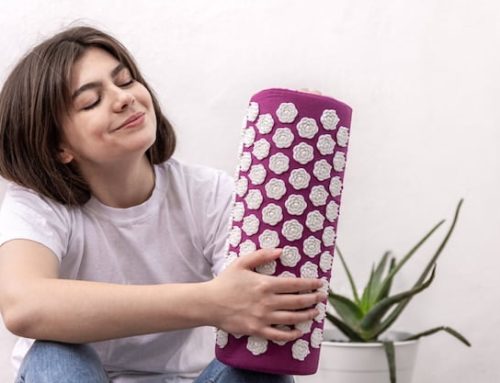Are You Experiencing Pain That Could Be Mistaken for Fibromyalgia? Foam Rolling Might Help
If you’ve been experiencing chronic pain in your muscles and tendons, you may have been diagnosed with fibromyalgia. However, there is a chance that your pain could be caused by trigger points, also known as myofascial pain syndrome. These are areas of muscle that have become tight and sensitive as a result of injury, stress, or overuse.
What are trigger points?
To understand trigger points, it’s helpful to first understand fascia. Fascia is a connective tissue that surrounds and supports muscles, organs, and other structures within the body. Trigger points are knots or tight bands that form within the fascia, causing pain and discomfort.
Trigger points can develop in any muscle, but they are particularly common in the back, neck, shoulders, and hips. They can be caused by a variety of factors, including poor posture, repetitive motion, and stress. When left untreated, trigger points can lead to chronic pain and disability.
How can foam rolling help?
Foam rolling is a form of self-massage that can help alleviate trigger point pain. By using a foam roller to apply pressure to the affected area, you can help release tension and increase blood flow to the muscle. This can help reduce pain and improve mobility.
How to foam roll effectively
To foam roll effectively, start by placing the foam roller on the ground and lying on top of it with the affected area facing down. Use your hands and feet to support your body weight and slowly roll back and forth over the foam roller. Whenever you come across a particularly tight or tender spot, stop and hold the pressure for 20-30 seconds before continuing.
Precautions when foam rolling with trigger points
It’s important to note that foam rolling can be uncomfortable, particularly when working on trigger points. To avoid causing further injury, be sure to listen to your body and adjust the pressure as needed. If you experience sharp or shooting pain, stop immediately and seek medical attention.
Other treatments for trigger points
In addition to foam rolling, there are a variety of other treatments that can help alleviate trigger point pain. These include:
- Massage therapy: A trained massage therapist can use a combination of techniques to release trigger points and improve circulation.
- Acupuncture: This ancient form of Chinese medicine involves the insertion of thin needles into the skin to stimulate the body’s healing response.
- Stretching: Gentle stretching exercises can help improve flexibility and reduce muscle tension.
- Heat therapy: Applying heat to the affected area can help increase blood flow and promote relaxation.
Conclusion
If you’re experiencing chronic pain that has been diagnosed as fibromyalgia, it’s worth considering the possibility that trigger points could be the cause. By incorporating foam rolling into your self-care routine and exploring other treatment options, you may be able to alleviate your pain and improve your quality of life. As always, be sure to consult with a healthcare professional before beginning any new treatment regimen.






